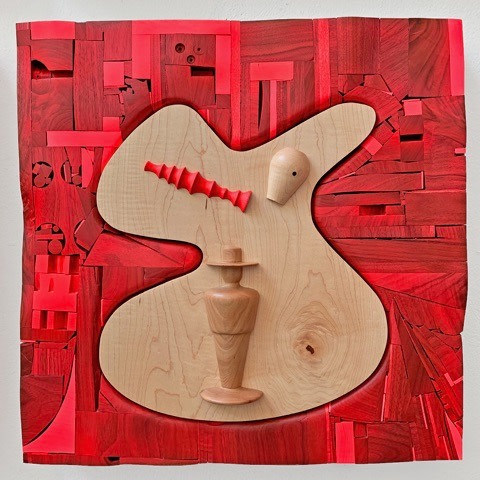But where after all the stars are nothing but stars
Nor the flowers but flowers,
Which is why we call them stars and flowers
- From Guardador de Rebanho by Fernando Pessoa (1911 – 1912)
CARBON 12 is delighted to present Edgar Orlaineta’s first solo exhibition with the gallery, ‘What We See of Things is the Things’. In his new body of work, Orlaineta reflects on the philosophical explorations of perception and essence, challenging traditional notions of art and the birth point of objects through his profound engagement with materiality and meaning, just as Fernando Pessoa does in his seminal book, Poemas de Alberto Caeiro (1911-1912).
Orlaineta’s exploration of objects as non-functional or decontextualized allows him to strip them down to their purest form: a thing. What is it that differentiates things from objects, or even from art? How do these things interact with their environment? Is it the environment that gives them meaning, or vice versa? At what point during the process of making something, does it actually become something?
These are some of the questions the artist aims to demystify through his processes and transformations, as he continuously challenges the seriousness of art, the functionality of objects, and the environments in which they exist.
Orlaineta’s organic and geometric forms engage with the space in which they are created. This interaction creates direct contact between the artist and matter, manifesting a dialogue between himself and the world’s bluntness. Throughout the process of creating these objects, the artist highlights the transformative states taken on by his materials as he manipulates them. Within this practice, the artist can visualize this metamorphosis of matter. Being part of each part of the process allows him to experience how a thing becomes a thing.
Environment plays an important role in Orlaineta’s work, dictating the process and transformative effects. This notion extends beyond material and into audiences, inviting them to reflect on the nature of the production as drawing from objects and their blunt reality. Through this contemplation, the works raise questions on the complex phenomena of techne, the intricate crafting of things; and poiein, the purposeful act of creating.
Aristotle defines art as the realization of a true idea in physical form and that all art is imitation. While, to a certain extent, this may be true, Orlaineta reflects on the thingness of objects rather than their artness. By stripping the object of its functionality, the artist attempts to decipher what aspects turn objects into things and the reasons for their transformation. To the artist, the true importance of these works lies not in imitation, but in the novel and original elements which appear as a result of their craft.
Painting from depictions or images of objects rather than the physical item, Orlaineta’s paintings are reminiscent of the ceramic works and paintings pictured in Poemas de Alberto Caeiro, by artists such as Bernard Leach, Otto & Gertrud Natzlers, and Léon Spilliaert.
First, he applies the depicted object on the canvas, utilizing this procedure as a means of eliminating the concept of aura and separating himself from any motivation. After much contemplation, he applies blocks of flat color to the unpainted areas, further enhancing the idea that the object is not a picture nor an illusion, but rather an item that is non-referential to a particular reality. Finally, Orlaineta creates some peculiar and reimagined items reminiscent of tools, anthropomorphic figures, and animal forms, and integrates them into the compositions thus completing the works.
Through his works, Edgar Orlaineta seeks to eliminate any pre-conceptualized notions of the depicted objects, reducing them to what they appear as to the naked eye: things. The artist’s fascination with the immediate reality of objects rather than finding meaning through the elements that constitute his sculptural forms, furthers his attempt to exhaust them of all preconceived functions, leaving room for interpretation.
Throughout his exploration of things, Orlaineta is reminded his earliest childhood memories to the heart of his grandmother’s home, where the hanging images on the walls imprinted themselves within his memory either as the image or lingering as a simple presence. Within this thought is the notion of the picture, where seeing takes on a greater importance than analyzing. The outcome of this technical process maintains its paradoxical aspect while retaining his works’ thingness.
95

